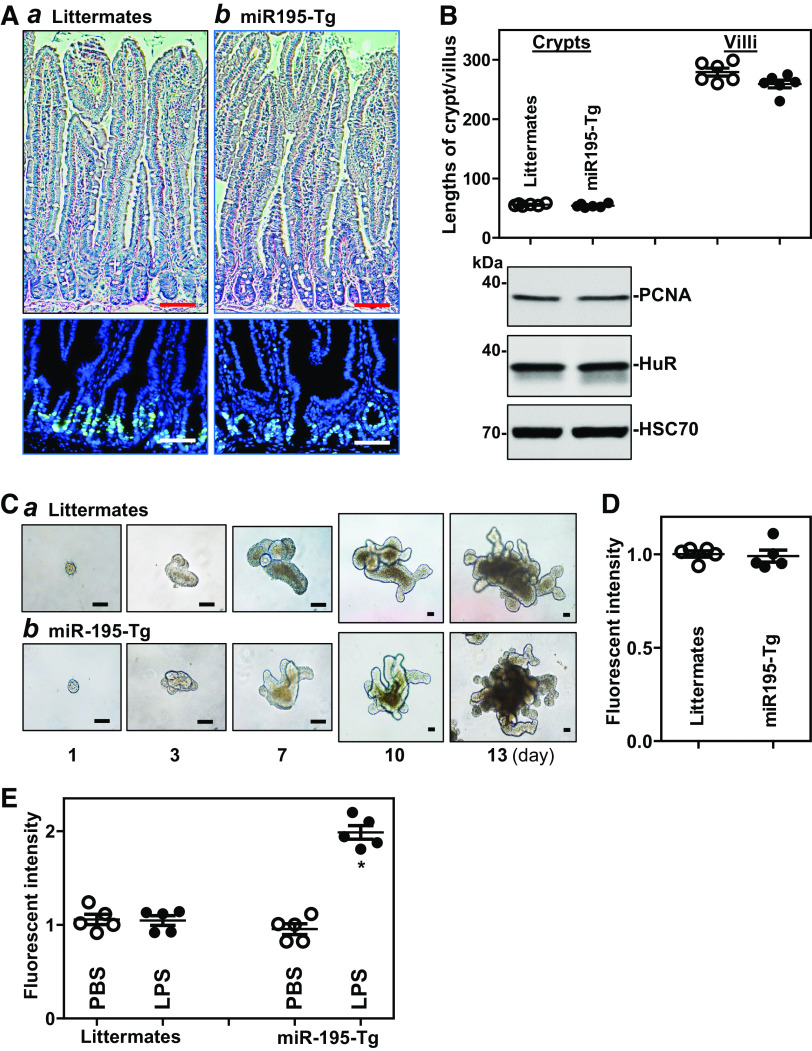Figure 4.
Transgenic expression of miR-195 fails to alter growth of the small intestinal mucosa but increases vulnerability of the gut barrier to lipopolysaccharide (LPS). A: photomicrographs of hematoxylin and eosin staining of the small intestine (top) and proliferating cells in the crypts (bottom) as measured by BrdU labeling assay: littermates (a); and miR195-Tg mice (b). BrdU (1 h postinjection, S phase), green. Scale bar, 50 µm. All experiments were repeated in five littermate or miR195-Tg mice and showed similar results. B: the length of crypts and villi (top) and immunoblots of PCNA and HuR (bottom) in the mucosa described in A. Values are the means ± SE (n = 6 mice). C: growth of intestinal organoids isolated from the proximal small intestine: littermate (a); and miR195-Tg mice (b). Images were taken at different times after cultures. Three separate experiments were performed and showed similar results. Scale bar: 100 μm. D: gut permeability in the mice described in A. FITC dextran was given orally, and blood samples were collected 4 h thereafter for measurement. Values are the means ± SE (n = 5 replicates). E: increased vulnerability of the gut barrier in response to LPS. Mice were intraperitoneally injected with LPS (0.1 mg/kg) in 200 µL PBS once daily for 5 days. Gut permeability was measured 24 h after treatment with last dose of LPS. Values are the means ± SE (n = 5 replicates). *P < 0.05 compared with PBS or littermates exposed to LPS. Statistical significance was analyzed using unpaired, two-tailed Student’s t test. miR195-Tg, miR-195 transgenic; LncRNAs, long noncoding RNAs; miRNAs, microRNAs; q, quantitative; RT, reverse transcription.

